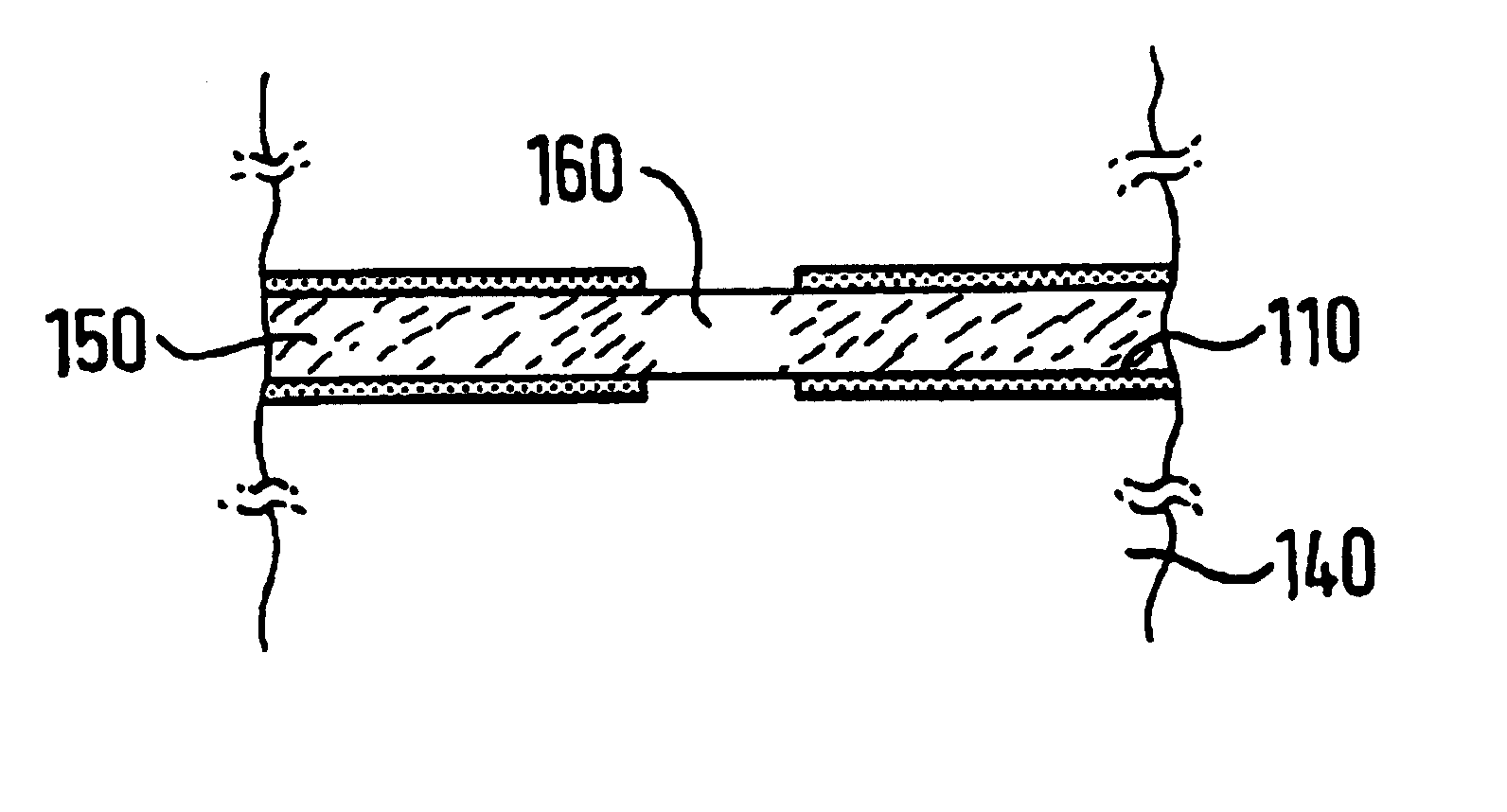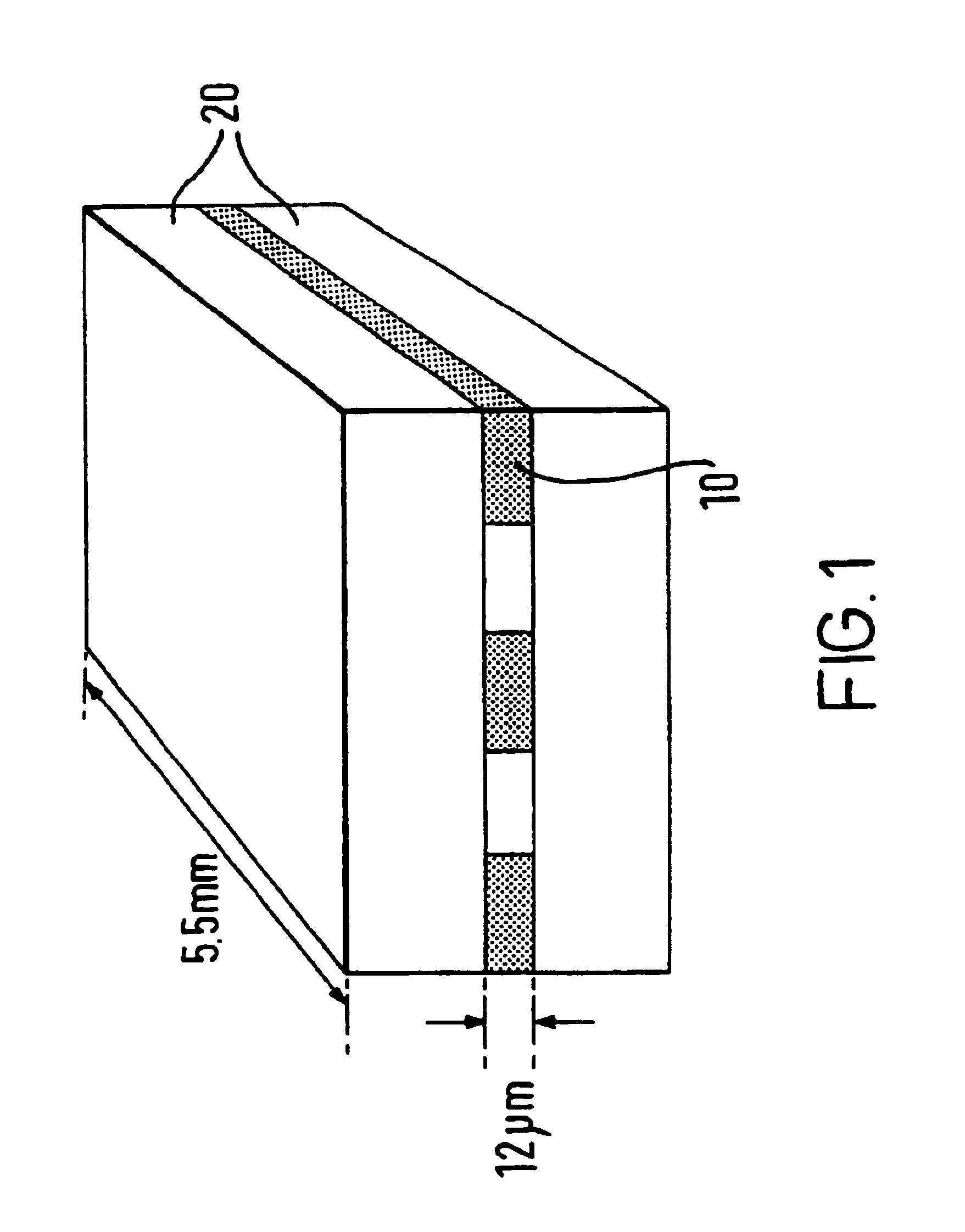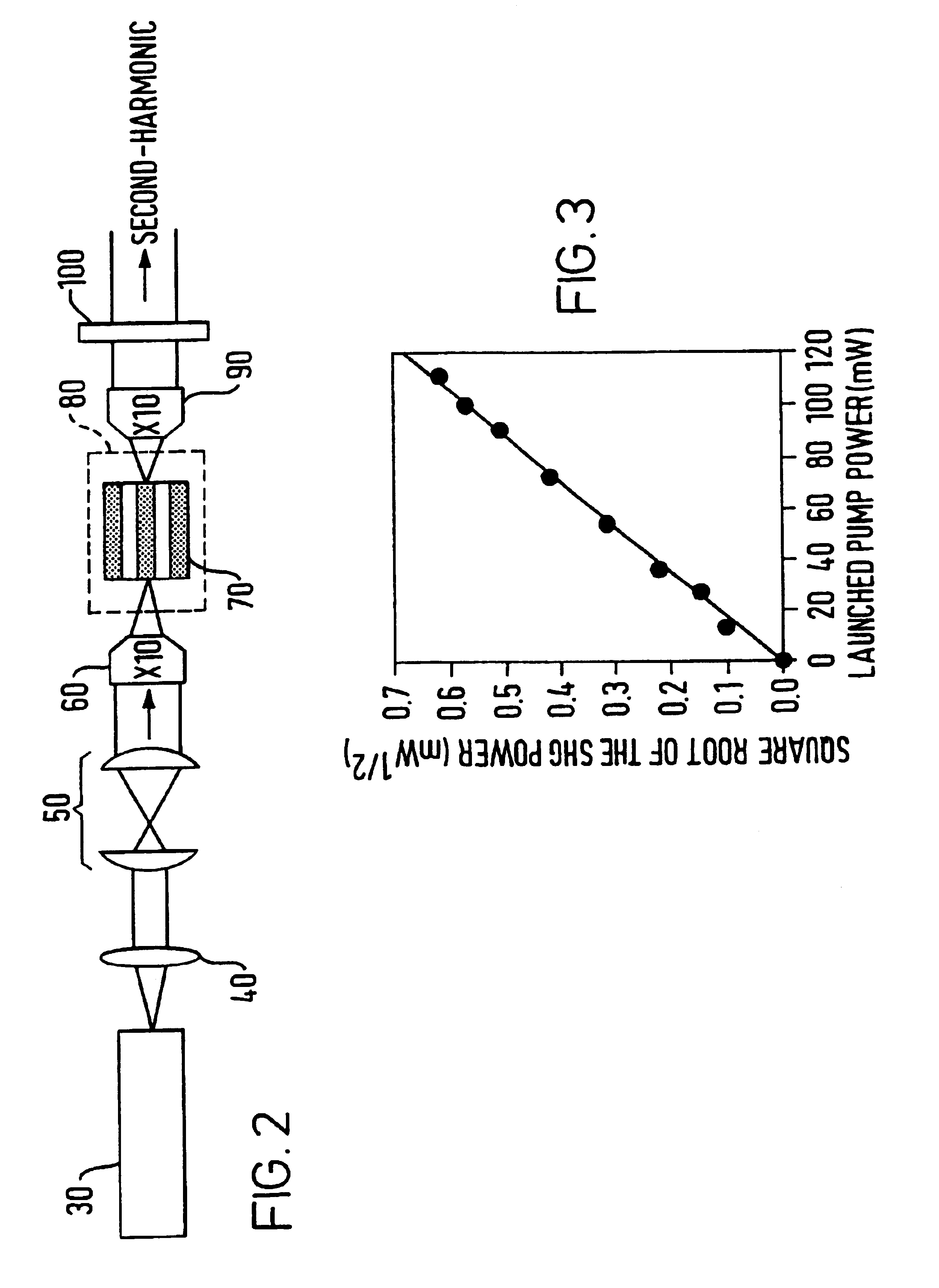Optical waveguide and fabrication method
a fabrication method and waveguide technology, applied in the field of fabrication of optical waveguides, can solve the problems of inconvenient arrangement for many waveguide applications or as a single-mode waveguid
- Summary
- Abstract
- Description
- Claims
- Application Information
AI Technical Summary
Benefits of technology
Problems solved by technology
Method used
Image
Examples
first embodiment
In summary, for the invention these experiments demonstrate the successful prototype fabrication of a 12-.mu.m-thick, 5.5-mm-long, symmetrical PPLN waveguide buried in LiNbO.sub.3 by DB. Using the 6.50-.mu.m-period PPLN grating at an elevated temperature of 174.degree. C., an efficient quasi-phase-matched frequency doubling of the 1064 nm line of a cw diode-pumped Nd:YAG laser has been demonstrated. For 204 mW of fundamental pump power, nearly 2 mW of green power was generated at an output wavelength of 532 nm. This result was obtained with non-optimum focusing conditions but remains higher than the theoretical expectation for a similar length of bulk material. The waveguiding properties were shown to be different in the PPLN, and unpoled LiNbO.sub.3 regions of the sample, with the PPLN section showing a surprising single-spatial-mode behaviour. These results suggest that the production of longer buried waveguides, potentially incorporating channel structures, should lead to highly-...
second embodiment
Referring now to FIGS. 4 and 5, a second embodiment using an indiffusion technique to define a waveguide path will be described.
In this second embodiment, a piece of PPLN 100 is made by the conventional electrical poling method. The piece 100 might be, for example, 500 .mu.m thick and several mm in the other two dimensions. One face 110 of the piece 100 is patterned with magnesium oxide (using a process of photolithography and vacuum evaporation or sputtering). The magnesium oxide lamina is less than about 400 nm thick, and defines (by the parts not covered by the lamina) a waveguide path along the piece 100. The piece 100 is then heated to a temperature of between about 600.degree. C. and about 1200.degree. C. This causes the magnesium oxide material to diffuse in and, in the indiffused regions 130, locally lower the refractive index.
The piece 100 is then bonded, by a direct bonding process applied to the face 110, to a LiTaO.sub.3 substrate (140, FIG. 5), before being polished dow...
PUM
| Property | Measurement | Unit |
|---|---|---|
| phase-matching temperature | aaaaa | aaaaa |
| wavelength | aaaaa | aaaaa |
| thick | aaaaa | aaaaa |
Abstract
Description
Claims
Application Information
 Login to View More
Login to View More - R&D
- Intellectual Property
- Life Sciences
- Materials
- Tech Scout
- Unparalleled Data Quality
- Higher Quality Content
- 60% Fewer Hallucinations
Browse by: Latest US Patents, China's latest patents, Technical Efficacy Thesaurus, Application Domain, Technology Topic, Popular Technical Reports.
© 2025 PatSnap. All rights reserved.Legal|Privacy policy|Modern Slavery Act Transparency Statement|Sitemap|About US| Contact US: help@patsnap.com



